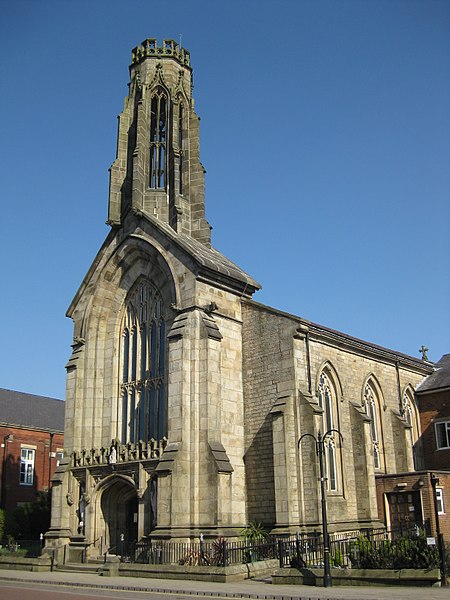St Marie's Church, Bury
1825 establishments in England19th-century Roman Catholic church buildings in the United KingdomBuildings and structures in Bury, Greater ManchesterGothic Revival church buildings in Greater ManchesterGrade II listed Roman Catholic churches in England ... and 4 more
Grade II listed churches in the Metropolitan Borough of BuryRoman Catholic Diocese of SalfordRoman Catholic churches completed in 1842Roman Catholic churches in Greater Manchester

St Marie's Church is a Roman Catholic parish church in Bury, Greater Manchester, England. It was built from 1841 to 1842 in the Gothic Revival style. It is situated between the Manchester Road and Back Knowsley Street in the town centre. It is a Grade II listed building.
Excerpt from the Wikipedia article St Marie's Church, Bury (License: CC BY-SA 3.0, Authors, Images).St Marie's Church, Bury
Back Knowsley Street,
Geographical coordinates (GPS) Address Nearby Places Show on map
Geographical coordinates (GPS)
| Latitude | Longitude |
|---|---|
| N 53.5912 ° | E -2.2992 ° |
Address
St Maries R C Church
Back Knowsley Street
BL9 0AY , Buckley Wells
England, United Kingdom
Open on Google Maps









